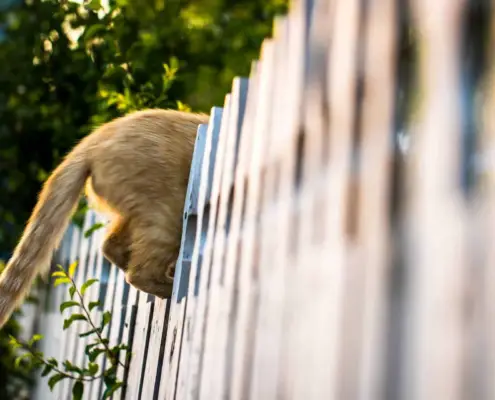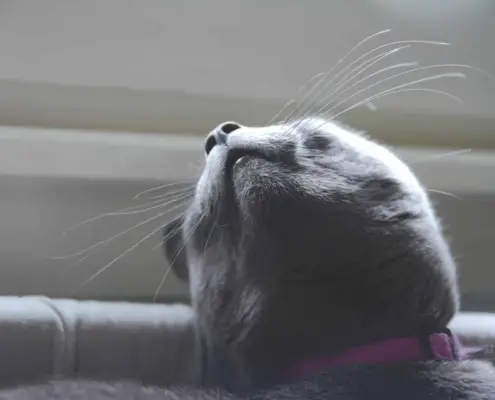
Understanding cat behavior is essential for any cat owner or enthusiast. Cats have unique personalities and preferences, and it is important to recognize and respect their boundaries. One common question that arises is whether cats enjoy being held. While some cats may enjoy physical contact, others may not be as fond of it. In this article, we will explore the different signs that indicate whether a cat enjoys being held or not, the factors that influence their preference, and how to properly hold a cat to ensure their comfort and well-being.
Do cats enjoy physical contact?
Cats, like humans, have individual preferences when it comes to physical contact. While some cats may enjoy being held and cuddled, others may find it uncomfortable or even stressful. It is important to remember that cats are independent animals with unique personalities. Some cats may prefer to be close to their humans and enjoy the warmth and security of being held, while others may prefer to have their personal space respected.
Signs that a cat enjoys being held
Cats that enjoy being held will often display certain signs that indicate their comfort and enjoyment. One of the most common signs is a relaxed body posture. A cat that is comfortable being held will have a relaxed body with their tail in a neutral position. They may also lean into the person holding them, indicating their trust and contentment. Another sign is purring. Cats often purr when they are happy and content, so if a cat purrs while being held, it is a good indication that they are enjoying the experience.
Another sign that a cat enjoys being held is kneading. Kneading is a behavior that cats exhibit when they are content and relaxed. It involves the cat pushing their paws in and out against a soft surface, often accompanied by a rhythmic motion. If a cat kneads while being held, it is a clear indication that they are comfortable and enjoying the physical contact.
Signs that a cat does not enjoy being held
On the other hand, there are also signs that indicate a cat does not enjoy being held. One of the most obvious signs is struggling or attempting to escape from being held. If a cat is trying to wriggle out of your grasp or displaying signs of distress, it is important to immediately release them and respect their boundaries. Another sign that a cat does not enjoy being held is an aggressive response. If a cat hisses, growls, or lashes out when being held, it is a clear indication that they are not comfortable with the physical contact.
Additionally, a cat that does not enjoy being held may display signs of stress or anxiety. These signs can include dilated pupils, flattened ears, and a tense body posture. It is crucial to pay attention to these signs and understand that forcing physical contact on a cat that does not enjoy it can lead to negative associations and further stress for the cat.
Factors that influence a cat’s preference for being held
A cat’s preference for being held can be influenced by various factors. One important factor is their early socialization experiences. Cats that were properly socialized as kittens and had positive experiences with human contact are more likely to enjoy being held. On the other hand, cats that were not properly socialized or had negative experiences may be more hesitant or fearful of physical contact.
The individual personality of a cat also plays a role in their preference for being held. Some cats are naturally more affectionate and enjoy close physical contact, while others may be more independent and prefer their personal space. It is important to understand and respect each cat’s unique personality and preferences.
How to properly hold a cat
For cat owners who have a cat that enjoys being held, it is crucial to know how to properly hold them to ensure their comfort and safety. The first step is to approach the cat calmly and gently. Avoid sudden movements or loud noises that may startle the cat. Place one hand under the cat’s chest and the other supporting their hindquarters. This provides stability and support for the cat’s body.
When lifting the cat, do it slowly and smoothly. It is important to support their full body weight to avoid any discomfort or strain on their limbs. Once the cat is in your arms, hold them close to your body to provide a sense of security. Avoid squeezing or restraining the cat too tightly, as this can cause stress and discomfort.
Tips for making holding a cat a positive experience
To make the experience of being held a positive one for your cat, there are a few tips to keep in mind. First, always start with short holding sessions and gradually increase the duration as your cat becomes more comfortable. This allows the cat to adjust to the physical contact at their own pace.
Additionally, provide positive reinforcement during and after holding sessions. Offer treats or praise to reward your cat for their calm and relaxed behavior while being held. This helps to create positive associations and make the experience enjoyable for your cat.
It is also important to respect your cat’s boundaries. If your cat shows signs of discomfort or attempts to escape, immediately release them and give them space. Pushing a cat to tolerate being held when they do not enjoy it can lead to further stress and negative associations.
Alternatives to holding a cat for bonding and interaction
For cat owners whose cats do not enjoy being held, there are still plenty of alternatives for bonding and interaction. Each cat has different preferences, so it is important to find activities that your cat enjoys. Some cats may prefer interactive play sessions with toys, while others may enjoy grooming sessions or simply spending time in the same room as their human.
Observing your cat’s body language and responses can help you identify the activities they enjoy the most. It is important to engage with your cat in a way that respects their boundaries and makes them feel comfortable and safe.
The importance of respecting a cat’s boundaries
Respecting a cat’s boundaries is crucial for their emotional well-being and the overall quality of your relationship. Cats are independent animals with their own preferences and comfort levels. It is essential to recognize and respect these boundaries to ensure a positive and trusting relationship with your cat.
Not all cats enjoy being held, and that is perfectly normal. It is important to remember that each cat is an individual with their own unique personality and preferences. By respecting their boundaries and finding alternative ways to bond and interact, you can build a strong and fulfilling relationship with your feline companion.
Conclusion
In conclusion, whether cats enjoy being held or not depends on their individual preferences, early socialization experiences, and personality. Some cats enjoy the warmth and security of being held, while others may find it uncomfortable or stressful. It is crucial to recognize the signs that indicate whether a cat enjoys being held or not, and to always respect their boundaries.
For cat owners whose cats enjoy being held, it is important to learn how to properly hold them to ensure their comfort and safety. Short holding sessions, positive reinforcement, and respecting their boundaries are key to making the experience enjoyable for both the cat and the owner. For cat owners whose cats do not enjoy being held, there are still plenty of alternatives for bonding and interaction that can be explored.
Remember, a strong and trusting relationship with your cat is built on understanding, respect, and the ability to adapt to their individual needs and preferences.
If you enjoyed my article, I would appreciate you sharing it with your network.

Sima Ndlebe
Sima writes for CatBuzz. He is interested in Cats, Health and Fitness, and Entrepreneurship.
Published: 17 November 2023



